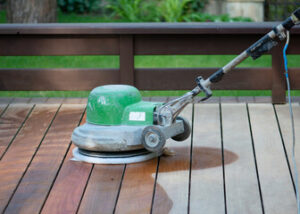When your home’s windows show signs of wear, repair or replacement becomes a significant project. A professional can help you make the best choices and keep costs down.

Depending on your location, you may qualify for energy-efficient rebates. Window Replacement Rockville MD can advise you about these and other local incentives.
If you’re replacing an existing window or installing new windows in a newly constructed home, the size of the window opening is important to consider. If the windows are too small, they won’t seal properly and will leak. On the other hand, if they are too big, they will create drafts and increase energy costs.
To measure the inside width of an existing window, remove the sash and use a tape measure from the jamb to the sill in three places: the top, middle, and bottom. The smallest number is the width measurement you need to order the replacement window.
The height of an existing window is easier to figure out. Look at the head jamb of the frame, which is located on the top of the frame. This is the part that holds the window sash when open. From there, measure to the sill in three places: left, middle, and right. Then, subtract half a inch from each measurement to get the actual frame height that you need to order the replacement window.
Window manufacturers use a simple size notation to help homeowners find the standard window sizes they need for their homes. These sizes are the combined width and height of a window. For example, a “2426” window is two-feet four inches wide and two-feet six inches high.
While it is possible to order custom-sized windows for your home, they’re more expensive and take longer to receive compared with standard window sizes. To avoid making costly mistakes, learn about the standard window sizes available to you and work with a licensed window specialist to find the perfect window for your home.
If you’re installing replacement windows in an existing frame, it’s best to have your walls checked for damage. If necessary, you can hire a general contractor to repair or rebuild damaged walls before putting in new replacement windows. If your home is over 30 years old, you should also replace the existing insulation in the wall system before installing new replacement windows. This will improve the energy efficiency of your home and save you money on your utility bills.
Installation
Window replacement involves removing the existing window and installing the new window. In some cases, this will involve cutting out sections of the drywall around the old window and replacing them. This will improve air and water tightness as well as enhance the appearance of your home. Whether you are replacing single pane windows or upgrading to double or triple-pane, energy efficiency is the key to reducing your utility bills.
To improve the performance of your new windows, make sure that the opening in which they will be installed is properly caulked, sealed and insulated. If it is not, the new windows will be more difficult to open and close and could create moisture issues.
Moisture problems can show up as fogging between the glass or condensation on the outside of the window. The cause is typically repeated cycles of heating and cooling that force the window to expand and contract. This cycle can cause the special seals that hold the window in place to harden and crack. When this happens, the window is more prone to fogging and can eventually fail.
To prevent this from happening, it is recommended that you have a professional install your new windows. A professional can use a spray foam and an elastomeric caulk that is designed for exterior windows to create a proper seal. They will also ensure that the drywall is free from moisture damage before installing the window.
If your old window is a full-frame style, the contractor will remove the siding and trim and will also need to repair any sheathing that is damaged by moisture. Then they will spray the inside of the window frame’s jambs with insulation and an elastomeric caulk to prepare for the new window. The contractor will also install the new window by running a bead of caulk along each side of the frame before screwing it in place.
Once the new window is installed the contractor will caulk and seal all of the gaps between the new window and the existing framed opening. They will also replace the interior stops, which are wood pieces that run down the sides of the frame to hold the sash in place. The contractor will screw the new stop molding in place with finish nails and they may need to fill dips, dents or holes with wood putty before painting or staining.
Energy Efficiency
If your windows aren’t insulated and don’t have Low-E coatings, you’re probably losing energy, which in turn increases utility bills. Window replacement provides the best opportunity to upgrade to high-efficiency ENERGY STAR® rated glass and frames.
New windows are generally more efficient than old ones, but the exact amount depends on the window type and frame material, as well as its glass package. Frame materials that provide a higher thermal resistance, such as vinyl and fiberglass, are more effective than metals. Glass packages with low-emissivity coatings and double or triple panes are more efficient than single-pane windows.
The overall efficiency of a window also depends on its frame and hardware, such as shutters and cranks. It’s essential to consult a reputable contractor and request estimates from several companies to find the best product at the most competitive price.
Once you’ve decided to replace your windows, the timeline for installation will depend on the supplier and your choice of window type. Some contractors are able to install standard options, such as vinyl double-hung windows, themselves, but others specialize in more complex options, such as fiberglass triple-pane or argon gas-filled windows. In these cases, a professional installer will be required to ensure proper installation and energy efficiency.
To improve the energy efficiency of your replacement windows, it’s recommended that you have a professional apply caulk around the perimeter of the frame, as this helps to prevent air leakage. This process is usually performed after the trim is removed and is a common part of a full window replacement. Alternatively, you can choose to have a professional install a window insert, which is smaller and fits inside the existing trim. This saves on labor costs but does not allow for insulating the gaps that commonly surround window openings and thus may yield less in energy savings.
Maintenance
As with any home improvement project, routine maintenance is essential to ensure the longevity of your replacement windows. This includes regular cleaning, inspections and addressing any issues that need repair. A small draft, minor condensation or peeling paint might seem insignificant, but they can all lead to further damage and compromise the functionality of your windows. Intact and well-functioning windows offer a number of benefits, including increased energy efficiency, protection from the sun’s UV rays and reduction in noise levels.
Window material and frame type will impact the amount of maintenance required, but all windows should be washed at least a couple times per year with non-abrasive cleaners. Vinyl, fiberglass and wood-clad frames should be washed once or twice each summer, while wood or metal-framed windows may need to be washed as many as three or four times annually. In addition, it is a good idea to clean the window track and sill on all types of windows at least once per season using a non-abrasive cleaner.
It is also important to regularly check the condition of your casings, seals and caulking around your replacement windows. Gaps can let air in and out of your home, which reduces energy efficiency and leads to higher energy bills. Look for signs of wear or damage to these areas and use caulk to close any gaps if necessary.
For insulated windows, check the interior and exterior glass for any signs of fogging. Fogging between glass panes can indicate that the insulation has degraded or there is a leak in the seal. This should be repaired as soon as possible to prevent moisture from entering the house and damaging wood framing or causing mold and mildew.

